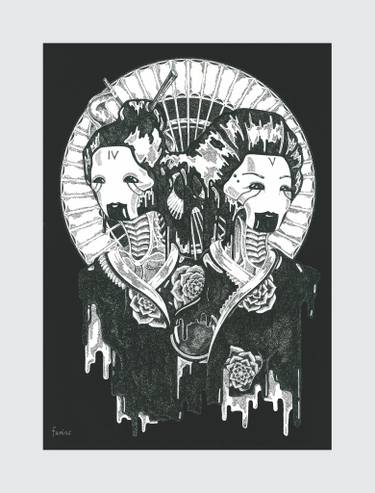

Also use a mixture of muted and saturated tones so it appears balanced. When using a colour scheme, make sure to use the tints, tones and shades of each colour to create variety. Make sure to keep the value range of the image realistic looking, so that the altered colour palette does not look overly surreal. The reflected colours in the water create symmetry, repetition and therefore unity in the piece, which overall produces an aesthetically pleasing effect.Ĭreate a similar effect in your own art by preselecting a colour scheme, like analogous or complementary, then simplifying the image with this limited colour palette. to create unity The intensity of the red tree creates salience and a focal point, whereas the muted tones in the grass and sky provide a sense of visual relief for the viewer. Cross used colours that are dissimilar in hue to create variety, but repeats these colours in the grasses, trees and mountains. The tetradic colour scheme of ‘River in Saint Clair’ by Henri Edmond Cross creates a sense of warmth and unity. By selecting various colours and using their extended tonal range in a painting, you can create cohesion through the simplicity of using fewer disparate hues. Using a colour scheme can create visual unity in a painting. This is because the repetition of similar colours unifies and connects areas that they are used. Similarly, colour is often used to unify a painting’s composition. Create unity with colour Henri-Edmond Cross: River in Saint Clair This unique way of painting branches creates a sense of movement, but also connects the different areas of foliage in the piece, which leads the viewer’s eyes around. For example, Cezanne paints the branches of trees with wispy, broken lines. Or they might repeat the use of curving lines to unify different areas. For example, artists may keep the thickness of lines consistent in the artwork. By using more simplified or repeated lines in the piece, artists can create a unified appearance. Line is an element that artists use to lead viewers around the painting and create unity through repetition and simplicity. Unity with line Paul Cezanne: The House and the Tree

Using methods such as creating repetition between elements, simplifying elements, or making elements closer in proximity will make the image as a whole appear more unified. Depending on the appearance and visual weight (how dominant) the element is, artists can create different effects. It’s these constituent elements that are arranged to make a whole. The visual elements in art are line, colour, texture, shape, value, form and space. Understanding the visual elements and how they relate to the principle of unity helps the artist to create cohesion between different parts of a painting. Equally, the proximity of the figures to each other makes them appear as one unified section. For example, the pattern of stars in the sky that have similar shapes and the regular spacing between the stars. There are many other ways you can describe sections of this painting as being united. Similar tones and hues can be seen in the people, boats, distant buildings and sky which unites them. The impasto technique also works to simplify details in the piece, which reduces the variety of different sections.Īnother way that Van Gogh has achieved unity in this painting is by the limited colour palette of yellow and blue. This in turn creates an immersive world of swirling colours. The brushstrokes connect different subjects and objects of the piece. Looking at the example of ‘Starry Night over the Rhone’, Van Gogh has used repetition in the textured impasto brushstrokes. Instead, it is about creating a harmonious relationship between the different elements in a painting. Unity does not mean that all elements should be identical. Then, they can use techniques such as contrast, repetition, pattern, simplicity, symmetry and proximity to create unity. To achieve unity, the artist must carefully consider how the elements of a painting interact. When visual elements share similarities, the image as a whole appears connected in appearance and message. Unity in art is the quality of how each visual element relates to another. Separate sections of an artwork can appear cohesive or disjointed, based on how the artists has used different elements in an image.

It refers to how all the components of a painting come together to appear unified. 7 Key Takeaways Definition of unity in art


 0 kommentar(er)
0 kommentar(er)
